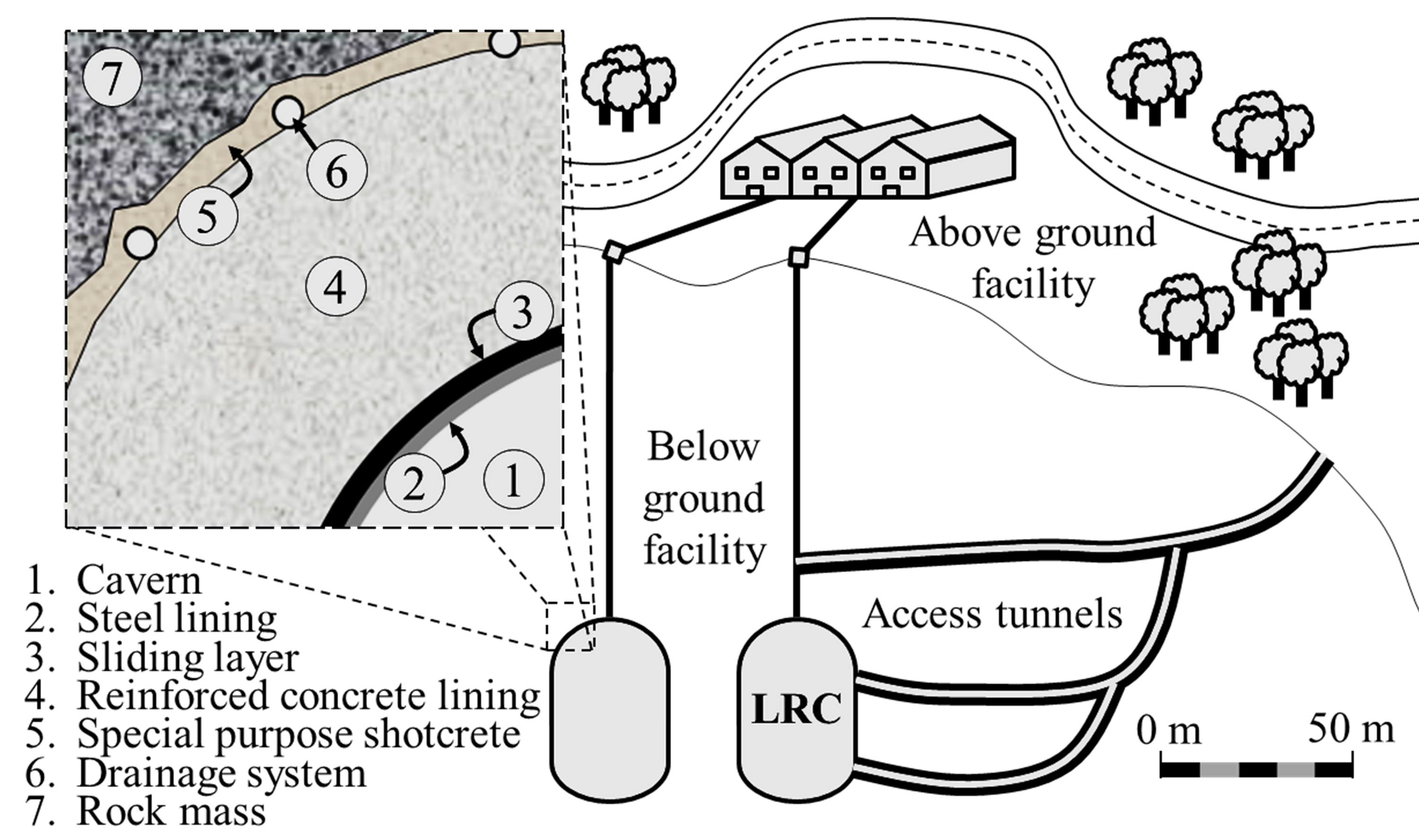Fossil-free steelmaking – large scale storage of hydrogen in rock caverns

The HYBRIT joint venture aims to implement the first fossil-free steel making process in Sweden. The new technology can reduce carbon dioxide emissions by as much as 10 percent. Davi R. Damasceno is a doctoral student at Civil and Architectural Engineering. His doctoral project is part of the HYBRIT research programme RP1 and deals with the storage of hydrogen gas in lined rock caverns. Through advanced numerical modeling and accounting for the natural uncertainties in the rock mass, he makes sure that the design of such storages is reliable against failure of the sealing lining.

“The geological conditions at the construction site are of major importance for the stability of the lined rock cavern. Natural local variations of these conditions must be accounted for to make sure the failure probability of such storage is sufficiently low. We need to be able to demonstrate, for public acceptance, that large quantities of hydrogen gas can be stored safely and used in society. The HYBRIT’s steel making process aims to show that it is possible to provide industrial quantities of clean and renewable energy. The potential for future business spin-offs is huge!”
In 2016, SSAB, LKAB and Vattenfall, financed by the Swedisg Energy Agency, started the HYBRIT (Hydrogen Breakthrough Ironmaking Technology) project which aims to revolutionize the steel industry. HYBRIT replaces the coking coal, which is traditionally needed for steel production, with fossil-free electricity and hydrogen gas. The result? The world's first fossil-free steelmaking process, with virtually no carbon dioxide emissions. Researchers at the Division of Soil and Rock Mechanics are part of HYBRIT's Research Program 1. Their aim is to develop simulation tools capable of estimating low probabilities of failure for the design of lined rock caverns.
What part does your research play in this?
“I develop simulation tools to test out the safety of different lined rock cavern design conditions. Primarily, I investigate the applicability of various risk-based dimensioning tools, in order to further improve existing methods for assessing the storage's safety against leakage. There are many factors involved – for example, the rock mass quality and stresses related to the surrounding environment, welding quality of steel plates etc. Hydrogen is also more complex than natural gas. By using computational models, we can include in-situ conditions deep underground, which would be very difficult and expensive in the lab. Additionally, we can easily study different sets of parameters in a short period of time. The calculated cavern deformation must be smaller than the resistance of the steel lining for the design to be considered safe. With these results, we can make sure the storage is built and handled in a way that is safe in the long term. The use of computational models can provide us with information that would not otherwise be possible. But of course, field data is vital to validate the models and ensure that they are representing the real behavior of the lined rock cavern.”
The next step is to scale up the process. A number of pilot projects are currently underway within the HYBRIT initiative. For example, in Luleå, the construction of a pilot plant for the lined rock cavern is underway. Davi is looking forward to this.
“The storage pilot plant will perform important testing program before the large-scale demonstration phase. With the data achieved from the pilot plant testing, my work can be verified and calibrated. This is an important part of the continued development and optimization of the HYBRIT initiative. It takes time to find the right technical, industrial and commercial solutions. There are several organisations involved, from both industry and academia. I study the mechanical behavior of the rock mass, others are focused on the electrolysis for hydrogen gas production and even the related laws for the actual process implementation. The aim is to make the process to full-scale fossil-free steel production completed by 2035.”
The Division of Soil and Rock Mechanics has long experience of applied research related to storing gas in lined rock caverns. HYBRIT’s Research Program 1 involves efforts from industry and academia to make the full steelmaking value chain, from mining to final crude steel product, fossil-free. Davi, who is originally from Belo Horizonte, Brazil, got his PhD position in KTH after completing his master studies in the Missouri University of Science and Technology, USA. He saw an interesting challenge in storing hydrogen gas in a sustainable way, both economically and environmentally, while also making sure to meet the societal safety requirements.
“I applied for the PhD position online when I was in Brazil. What attracted me was that it was applied research and leading directly to real-life technical development. The major aspect for the stability of the lined rock cavern is related to the geological conditions. The rock mass and in-situ stresses in Sweden are quite favorable for this technology – the rock cavern can withstand high internal gas pressures with little deformation. Initially, this concept is going to be applied on the steelmaking process, but in the future hydrogen gas may be stored this way for other purposes. There may be business spin-offs when more people see the ways hydrogen gas can be used as a sustainable alternative to fossil fuels. The HYBRIT initiative helps to meet the global climate goals in the Paris Agreement and the national environmental goals in Sweden and Finland. I am really happy to be able to play a part in this!”
Text: Josefin Backman
This is the eighth article in the School of Architecture and the Built Environment 's new series of articles on selected research, education or collaboration initiatives from each department. You can find the previous articles here:
- KTH Architecture: Introducing Lighting Design Research in Architecture
- Civil and Architectural Engineering: He is planning a new student competition about self-sufficiency
- Real Estate and Construction Management: New forum for discussion and cooperation on housing issues
-
Philosophy and History: The Mediated Planet: Claiming Data for Environmental SDGs
-
Sustainable Development, Environmental Science and Engineering (SEED): Collaborations to understand and manage water
-
Urban Planning and Environment: What makes us decide to change our travel behavior, to opt for innovation and a sustainable future?
-
KTH Architecture: Redesign in focus for a sustainable cultural heritage
